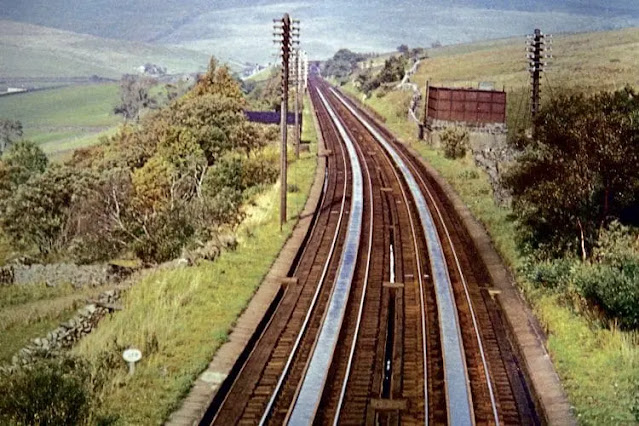How's this for a magnificent photograph by MJ Turner, whose commentary on it is:
A record of the restoration and conversion of the railway water tower at Settle Station on the World famous Settle-Carlisle Line.
Search This Blog
Tuesday, 29 October 2024
Saturday, 19 October 2024
Never a Dull Moment in Sleepy Settle
The emergency services are kept busy in this far flung corner of England, 30+ miles from the nearest hospital. Police, fire and ambulance are all based here in Settle. A bit further up the valley are the cave and mountain rescue. That said, the actual presence at any one time may be one police constable and one ambulance crew. Fire cover is by call-out. Mutual aid is there in abundance but it is from a distance and that takes time. Emergency calls for the ambulance are either answered almost instantly for Settle itself, IF the ambulance is not elsewhere in the vastness of the Yorkshire Dales. In that case there are the volunteer first responders or, nowadays, the air ambulance is the much valued backup.
You will have seen them on TV probably, too often deployed to the Three Peaks accidents and to serious road accidents.
Late yesterday afternoon must have been one of those times when 'our' ambulance was elsewhere - which could well include being at the far distant Airedale Hospital. I happened to be on the roof of the tower and saw and heard the air ambulance approaching Settle at speed from the south east, heading north west. To my surprise the helicopter slowed and circled more or less directly above the station and water tower, landing very nearby on the playing field of Settle Primary school, immediately on the far side of the railway. There it shut down and the paramedics went about their duties inside the by-then closed-for-the-day school.
Here it is (picture 1) between flights. It took off again around 5pm. Lisa Smith at Settle station caught the ideal picture, number 3 below.
Thursday, 10 October 2024
Some Questions Answered
The other day a proper letter arrived. You remember the sort of thing? With a proper stamp on it and my name and address written on it in ink! It was postmarked Swindon. It turned out to be from Philip Harrison from Luckington, Chipenham - a follower of this Blog. It was NINE pages long too!
Philip has an interest in water towers and a specific interest in the watering arrangements at Garsdale, near to the summit of the S and C, Garsdale had not only a tank house and water tower, more or less identical to ours here at Settle, but also the water troughs between he rails for expresses to pick up water without stopping. Here are the Garsdale troughs with their own water tank. Built in 1907 and now long since gone.
It was always a spectacle to see the troughs in use as when the tender was full, surplus water would often overflow, to the delight of line-side photographers but to the dismay of diners in the first class carriages behind:
But back to Philip Harrison. His scholarly letter addressed questions posed in this Blog.
Q1 Could Settle Station Tank House have been built earlier than 1876? Answer (backed up with numerous extracts from contemporary reports) - most probably. Settle station's site was hugely important as an accessible construction base, covering some 10 acres of land. Three tank engines operated along the line well before 1876 and it was important to avoid road haulage for massively heavy supplies. Settle station itself was completed by June 1876 when it was reported that 'a water tank is erected some 30 feet above the level of the rails, which will hold 200 tons of water'.
Q2 Why is Settle Station tank house so large? Answer - uncertain but optimism about future through and local traffic may have been the key. There was local concern about where the precious water would come from. In the end it came from Stainforth higher up the line.
Q3 How was the Garsdale Tank House heated? Answer - It was used for local social functions and had two big coal fired stoves which may have been later amenities fitted for these occasions.
My precis of the answers condenses page after page of evidence, or lack of it.
The letter concludes with a number of drawings of Midland Railway water tanks such as this one:
Thank you so much Philip Harrison.







